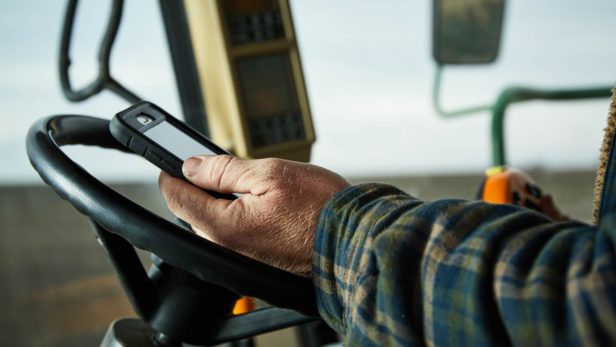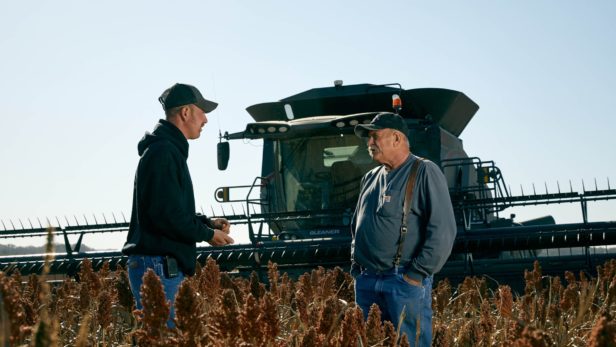Reprinted from Women in Agribusiness Quarterly Journal, January 2020
Communication in business is no longer a “nice to have” following the sale, but a necessity as an offering for the entire purchasing journey – even prior to making the deal.
How so? This can be explained through a rising trend in customer intelligence efforts — the ways businesses are seeking insight to better understand their customers in order to not only market to them accurately, but keep them long after the sale. Dimension Data supports this thought with the finding that “84 percent of companies who focus on improving the customer experience are reporting an increase in annual revenue.” Businesses are finding ways to better know their customers for the longevity of their company.
These concepts are ones that bleed into even highly relational industries, such as agriculture. Communication is a hotspot in the industry where improvement lies for agribusinesses to better understand what their farmers prefer. Increasingly, agribusinesses are needing to meet their farmers where they’re at by first understanding how they want to communicate. Farmers want an omnichannel communication approach with agribusinesses, with both digital and non-digital touchpoints from their agribusinesses.
The Great Communication Metamorphosis
Communication in agriculture comes in multiple forms. Even directly between agribusinesses to their farmers, numerous options exist. However, efficiency and preference in these options are where the differences lie. Current popular ways to buy and sell between agribusinesses and farmers include in-person exchanges, over the phone, email, text message, paper letters, and push notifications.

A rising communication method over the last few years has been the entrance of digital tools over non-digital tools in daily operations. Over 70 percent of farmers are using digital tools for a variety of farm-related practices in their communication and business practices including ag product searches, general farm management applications, and agronomic information acquisition.
The exact area in which farmers really desire the digital ability to communicate with agribusinesses starts in the initial product research stage of the customer buying journey, with 45 percent of farmers having a strong preference for purely digital channels. During this stage of the customer buying journey, farmers value “easy product comparison and easy search,” from which digital offerings provide the best solution. Additionally, in the “product reordering stage” of the customer buyer journey, farmers prefer digital methods for the ease of use factor.
These stages in the customer buying journey point back to how farmers want to communicate with agribusinesses with the convenience digital tools provide to farmers’ day-to-day. What once used to be predominantly face-to-face business exchanges between agribusinesses and farmers now can be done in a few taps of buttons on a device.
Seeking a Connection
Agribusinesses seeking to provide the types of digital communication farmers want have not had the smoothest of roads to travel in order to deliver such requests. This comes from a number of external aspects, particularly connectivity. Due to the rurality of farms, limited broadband networks have impacted farmers and agribusinesses’ abilities to access data connection from the field.
Broadband has been a fighting subject in the industry for a number of reasons. From the “Case For Rural Broadband” report published by the USDA, “Of the twenty-four million Americans living in households that do not have access to a fixed terrestrial (non-mobile or satellite) broadband provider, 80 percent of them live in rural areas, according to the latest FCC data.” That’s 19-plus million rural Americans, many of them farmers, unable to communicate and connect with businesses digitally.
While broadband has been a large piece of the puzzle fragmenting ag’s movement to advanced, reliable communication technologies, there remain other culprits in the distribution of effective digital tools for farmers — particularly in mobile devices such as smartphones.
An Opportunity in Mobile
The potential for smartphones in ag is comparable to an untapped goldmine. Smartphones are small, light, and packed with technology as powerful as a computer. Having a phone in the combine allows farmers to enter the day’s data in real time, rather than the extra step of doing this later after their time in the field.

Optimistically, ag technology companies are becoming more aware of the potential of smartphones in aiding farmers to do actual business. Even more, these companies are becoming more empathetic of the end-user their tools will serve – farmers — by implementing more useful features and designs into their apps; a previously long-standing problem in the creation of farming apps and programs.
This brings to light how better mobile capabilities are on the horizon to fulfill farmers’ digital communication preferences. Further, enhancing farmers’ preferences has been the rise of better communication features in smartphones, such as push notifications. Push notifications are offering agribusinesses the opportunity to reach multiple farmers through one message while avoiding the SMS fee that comes with text messages. Additionally, push notifications stand as a secure way to send sensitive information to specific farmers — something that is not effectively done via text SMS message.
Farmers are receptive to push notifications as the Business2Community article, “The Growing Importance of Mobile App Push Notifications” reports, “Push notifications have a 65 percent open rate and cause 65 percent of users to return to the app within 30 days.” Bushel, an ag software company utilizing push notifications within their mobile app platform, sited one Bushel-powered grain facility’s reaction to the capability to send notifications to their growers, “The growers really love using push notifications, it’s so convenient with easy access at the tip of their fingers.”
But It’s Both
Amongst the digital trends, the smartphone potential and pitfalls, and all that encompasses the nuances of communication, remains the relational core of the ag industry. Farmers like to know who they’re doing business with. This is not just a speculation, but a studied piece of how farmers like to do business.

According to a McKinsey & Company report calculating the results of a survey taken from more than 700 farmers across the U.S., this survey questioned the customer journey and communication preferences of farmers. The study revealed that overall, “When it comes to channels, farmers don’t want either–or; they want both.”
The study further proved farmers’ rooted loyalty to human interaction in business and communication.
Farmers prefer human interaction over digital interaction at two main points in the customer buying journey: the first-time purchasing stage, and for support. Sixty-seven percent of farmers like interaction at the initial purchasing stage, and a large 78 percent desire human help when there are questions about a product’s use and service. Farmers still want to be able to pick up the phone and call their agribusinesses or come into the facility in-person to communicate, they just want to do it during certain parts of doing business, and not for every piece of it.
Omnichannel as the Lasting Solution
Agribusinesses accepting an omnichannel communication approach with their farmers need not fear the deterioration of their highly personal relationships. Digital communication between growers and agribusinesses is not reducing the need for physical communication channels. Rather, businesses that have both digital and physical communication channels open are at a competitive advantage. Agribusinesses are only improving their relationships with their farmers by demonstrating their customer intelligence when implementing the communication preferences farmers want.
Useful technologies in agriculture, like the Bushel platform, are at the ready to enhance the ways agribusinesses communicate with their growers by marrying both the digital and human preferences–– implementing effectively the omnichannel approach that better serves agribusinesses and their farmers.